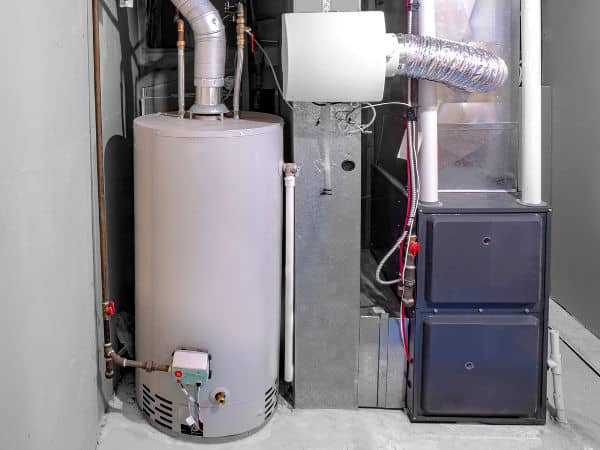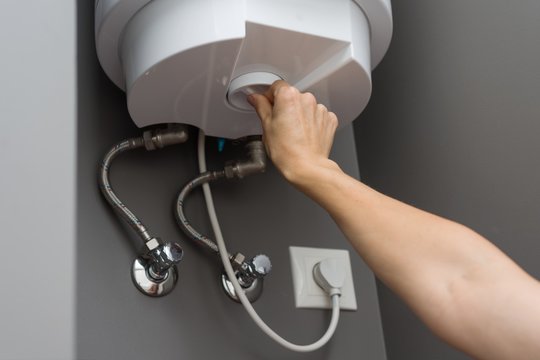Were you on the lookout for advise involving What Kind of Maintenance Do Water Heaters Need??

Warm water is crucial for everyday comfort, whether it's for a rejuvenating shower or cleaning recipes. To guarantee your warm water system runs effectively and lasts longer, regular upkeep is vital. This short article provides functional ideas and understandings on just how to keep your home's warm water system to prevent disruptions and pricey fixings.
Intro
Preserving your home's hot water system could seem challenging, but with a couple of easy actions, you can ensure it operates efficiently for many years to find. This guide covers every little thing from recognizing your hot water system to DIY upkeep suggestions and knowing when to call expert help.
Significance of Maintaining Your Warm Water System
Routine maintenance not just extends the life-span of your warm water system but additionally ensures it runs successfully. Disregarding maintenance can lead to reduced efficiency, greater energy costs, and even premature failure of the system.
Indicators Your Hot Water System Requirements Upkeep
Knowing when your hot water system requires attention can avoid significant issues. Watch out for indicators such as inconsistent water temperature, odd noises from the heating unit, or corroded water.
Understanding Your Warm Water System
Before diving right into maintenance tasks, it's handy to comprehend the standard elements of your warm water system. Generally, this includes the hot water heater itself, pipelines, anode rods, and temperature controls.
Month-to-month Upkeep Tasks
Routine month-to-month checks can help catch minor concerns before they escalate.
Flushing the Hot Water Heater
Purging your hot water heater gets rid of debris buildup, improving effectiveness and extending its life.
Monitoring and Changing Anode Rods
Anode poles prevent corrosion inside the storage tank. Checking and changing them when broken is critical.
Inspecting and Readjusting Temperature Level Settings
Adjusting the temperature settings ensures optimal performance and safety.
DIY Tips for Maintenance
You can perform several maintenance jobs on your own to maintain your warm water system in leading problem.
Looking for Leakages
Regularly check pipes and connections for leaks, as these can result in water damage and higher bills.
Testing Stress Alleviation Valves
Checking the pressure relief valve guarantees it works correctly and prevents too much stress buildup.
Shielding Pipes
Shielding hot water pipelines decreases warmth loss and can save power.
When to Call an Expert
While do it yourself upkeep is helpful, some problems require specialist competence.
Complex Concerns Needing Professional Help
Examples include significant leaks, electrical troubles, or if your hot water heater is constantly underperforming.
Routine Specialist Maintenance Advantages
Professional maintenance can include comprehensive evaluations, tune-ups, and ensuring compliance with safety requirements.
Verdict
Normal upkeep of your home's warm water system is essential for efficiency, longevity, and cost savings. By adhering to these suggestions and recognizing when to seek professional help, you can make sure a trusted supply of hot water without unforeseen disruptions.
How to Maintain an Instant Hot Water Heater
Before tinkering with your hot water heater, make sure that it’s not powered on. You also have to turn off the main circuit breaker and shut off the main gas line to prevent accidents. Also turn off the water valves connected to your unit to prevent water from flowing into and out of the appliance. 2. When you’re done, you have to detach the purge valves’ caps. These look like the letter “T†and are situated on either side of the water valves. Doing so will release any pressure that has accumulated inside the valves while at the same time avoid hot water from shooting out and burning your skin. 3. When the purge valves’ caps are removed, you have to connect your hosing lines to the valves. Your unit should have come with three hoses but if it didn’t, you can purchase these things from any hardware or home repair shops. You can also get them from retail stores that sell water heating systems. Read the user’s manual and follow it to complete this task properly. When the hosing lines are connected, open the purge port’s valves. 4. You should never use harsh chemical cleaners or solutions when cleaning your unit. Make use of white vinegar instead. It should be undiluted and you’ll probably use about 2 gallons. 5. Now flush your water heater. This task should probably take about 40 minutes. We can’t give you specific directions for this because the procedure is carried out depending on the type, model and brand of your heater. With that being said, refer to the user’s manual. 6. When you’re done draining the unit, you have to turn off the purge port valves again. Remove the hosing lines that you earlier installed on each of the water valves. Put the valve caps (purge port) back in their respective places and be very careful so as not to damage the rubber discs that are found inside these caps. 7. Now that everything’s back in place, check your user’s manual again to find out how to reactivate your water heating system. 8. Once it is working, turn one of your hot water faucets on just to let air pass through the heater’s water supply pipes. Leave the tap on until water flows smoothly out of it. https://www.orrplumbing.com/blog/2014/september/how-to-maintain-an-instant-hot-water-heater/

Do you enjoy more info about What Kind of Maintenance Do Water Heaters Need?? Create a remark down below. We would be delighted to hear your responses about this blog. We are looking forward that you visit us again before long. Please take a moment to share this write-up if you appreciated it. I am grateful for being here. Don't forget to stop by our blog back soon.
Click Here